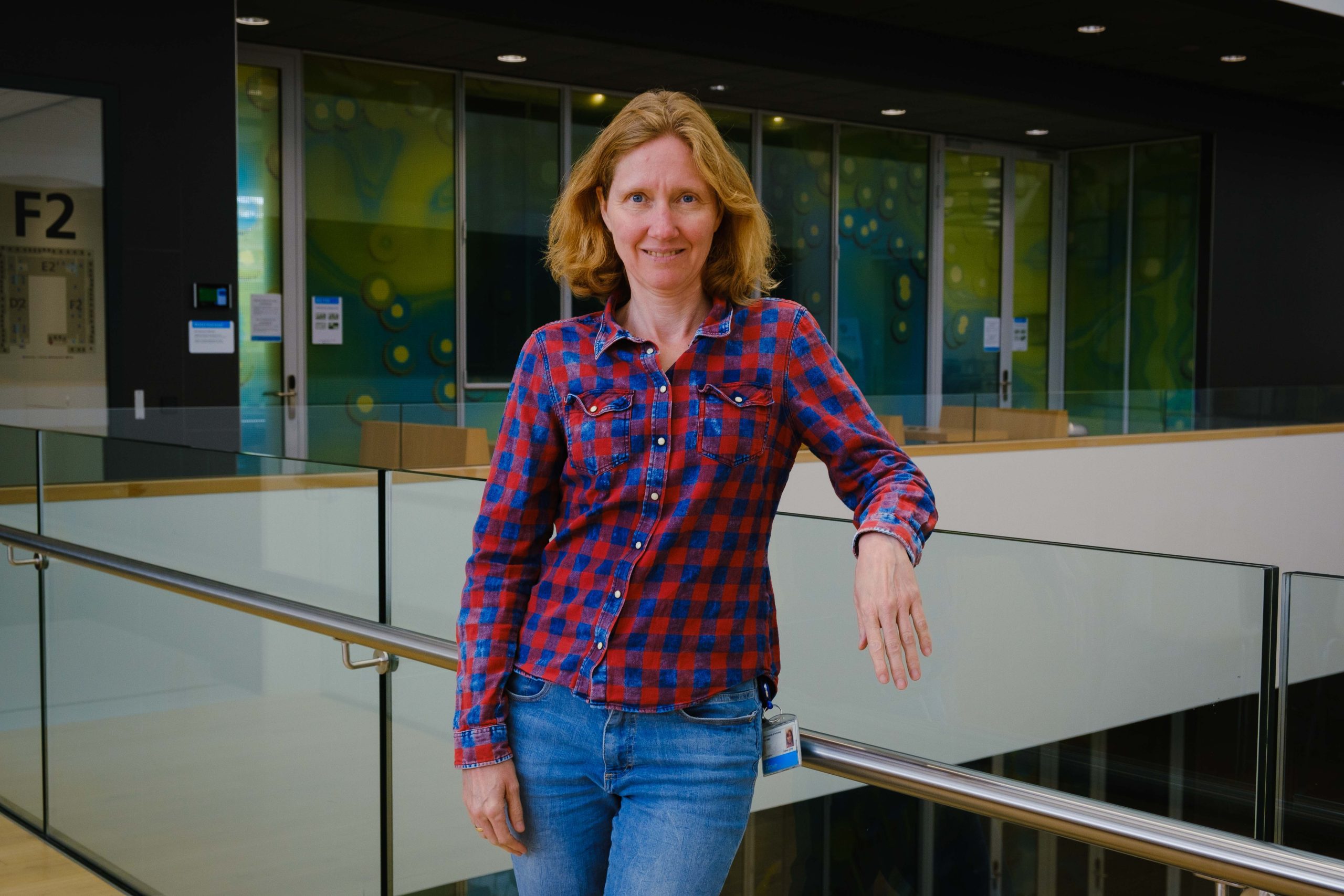For her physics research on biological processes, professor Nynke Dekker received the Physica Prize in May. What makes her research so special?
What makes one virus inhibitor so much better than another, biophysicist Nynke Dekker wonders. (Photo: Jaden Accord)
Nynke Dekker, Professor of Molecular Biophysics, caused some confusion among her audience when she addressed the FYSICA congress in May and said that one human produces about a light year of dna in their lifetime. “Each cell contains about one metre of dna. It fits because the dna is completely curled up. The human body consists of about 100 trillion (100,000 billion, JW) cells that divide once every so often (about 100 times on average in one human lifetime). If you multiply these numbers you reach one light year of dna in a human life.” This bizarre fact is a good illustration of the molecular biophysics that she works on.
The physicist was awarded the prestigious Physica Prize from the TU Delft Kavli Institute of Nanoscience that is awarded every year to an eminent physicist working in the Netherlands. The jury chose Dekker for ‘inventing and developing innovative physical methodologies that she applies to current and relevant issues in biology and medicine’.
What makes this special is that Dekker is not a biologist or a doctor, but a physicist. Delta met with her late June and asked how she, as a physicist, ended up studying life processes such as dna protein interactions?
Dna era
After her physics studies in Leiden and her doctoral dissertation defence in atomic physics at the University of Harvard, Dekker went in search of new research areas. It was the late 1990s and there was much interest in biology given the opportunities afforded by reading the genetic code of dna and, by extension, unravelling the hereditary material of humans. In other words, the human genome project. Humanity hoped to finally discover what distinguishes humans from other animals.
But what can a physicist contribute to knowledge about dna? Dekker thought that theoretical biophysics would help, but she wanted a more experimental approach. She then found the École Normale Supérieure (ENS) in Paris where she worked on experimental molecular biophysics as a postdoc. The Physica Prize jury sees her as the person who successfully expanded this specialism in the Netherlands. ‘She plays a leading role internationally in this subject and is one of the well-known Dutch faces on the international arena.’
Magnetic tweezers
Nynke Dekker came across magnetic tweezers at the ENS in Paris. It enables a single DNA molecule that is attached on one side to be manipulated (pulled and turned). Researchers were doing this using a miniscule magnet on the unattached side of the DNA string. It was controlled using an electromagnetic charged magnetic field. The instrument was further refined in her lab.
The magnetic tweezers allows the interaction between dna and proteins to be examined in detail. “You can use magnetic tweezers to precisely determine how tightly the dna is rolled up,” explains Dekker. “You can then see things like the effect of turning the dna string on a protein. You can make a protein either bind or not bind with just a slight turn.” Like paper, dna becomes illegible if it is too scrunched up.
Cell division
Dekker is studying the copying of dna and rna as occurs in every cell division and in every virus infection. A wide number of proteins are involved in the duplication of dna in our cells and they form a kind of molecular copying machine. A smaller number of proteins are involved in the duplication of rna through viruses. The polymerase protein is essential in all cases. It doubles the dna or rna by sticking the complementary base to each of the four bases in each step. There are substances that can disrupt the work of the polymerase proteins and these substances could become virus disruptors. The Covid pandemic put these in the public interest. Dekker researched the effect of these kinds of virus disruptors in her lab.
“Many of the viral polymerases that we examined work like a photocopier that builds rna building blocks,” Dekker explains. “You can chemically modify these building blocks to a certain extent using a virus disruptor which will cause the machine to get stuck. Then you can see that one chemical will cause a longer blockage than another. The question is then what makes one virus disruptor much more effective?” Dekker emphasises that the answer does not immediately lead to a new medicine. There is a lot more to it than that. But knowing the specific effect of a virus disruptor can be useful in assessing potential side effects.
Changing parts
A more recent addition to the set-up in the lab is fluorescence microscopy. “We marked different proteins in different colours,” says Dekker. “If we then follow a protein complex, such as the molecular photocopier, on the dna using a fluorescence microscope, we see the proteins that fly in and out. This helps clarify what happens when dna is copied.”
This is how Nynke Dekker and her group are discovering more about the most basic life process that occurs and has occurred in every living cell for billions of years.
- Read more about the Nederlandse Natuurkundige Vereniging (Netherlands’ Physics Society, NNV) and about Nynke Dekker’s research on her laboratory’s website.
Do you have a question or comment about this article?
j.w.wassink@tudelft.nl


Comments are closed.